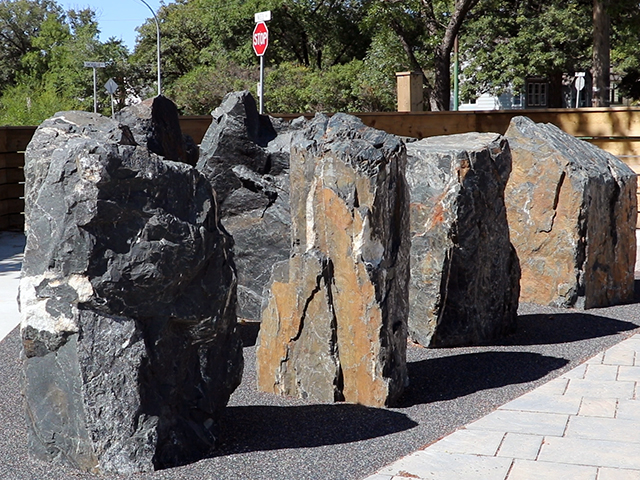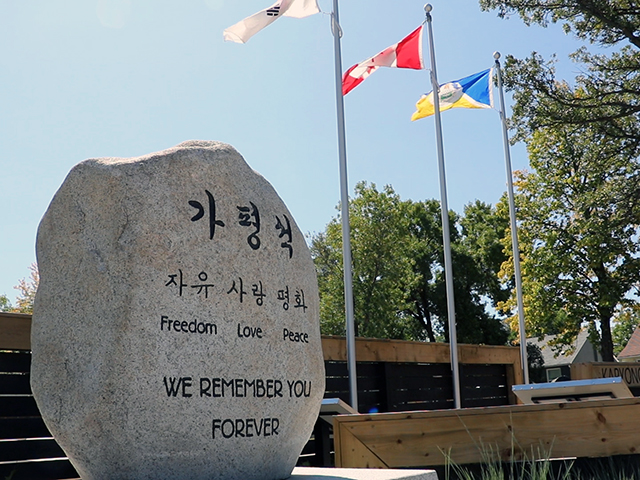Tucked behind a fence along a busy stretch of Ness Ave. the newly redesigned Kapyong Park is a place for reflection on a key battle in Canada’s military history.
“It is an opportunity for people to come here, take a look at the design features, and think about the insurmountable odds the Canadian forces had against them,” said Ian Legge, the Planning, Property & Development Department’s Landscape Architect behind the project.
Legge explained that during the Korean War, the Battle of Kapyong saw 700 Canadian soldiers fighting a Communist force of 5,000. In all, 10 Canadian soldiers were killed.

He wanted to pay tribute to the 10 fallen soldiers by featuring ten granite boulders in the park. The boulders sit opposite from 70 white blocks, which also serves as seating for people.
These 10 boulders and those 70 white blocks, they illustrate the 7-1 odds the Canadian soldiers faced.
There is also a chaotic paving stone pattern in the space between the boulders and blocks to the represent the two sides fighting.
The park, which officially opened in June, 2019, was designed to also host events such as Remembrance Day, anniversaries for the Korean War, or any other military-related ceremony. With that in mind, Legge had the seating oriented in the direction of South Korea.
“When you are sitting down for a ceremony you are facing the direction of which the battle took place,” he said.
The fence separating the park from Ness Avenue acts to dampen the vehicle sound but also serves another purpose. Legge designed it to gradually increase in size the further west it goes. The raised angle represents the assent to the hill of which the Canadians were fighting on.
When the park was almost finished, Legge received a call from the Korean Society of Manitoba who had been in contact with the South Korean Government about this project.

“The government was going to gift a large granite boulder from the Kapyong region to us,” recalled Legge.
That became a really amazing addition that we hadn’t counted on.
Legge said of all the projects he has worked on for the City, this park is the most memorable for him.
“I am very proud, very proud of it,” he said. “It means a lot to me that I had the opportunity to honour these brave men, who died in battle and to be able to come up with something that hopefully will be a lasting legacy for the Korean War and the Battle of Kapyong.”
